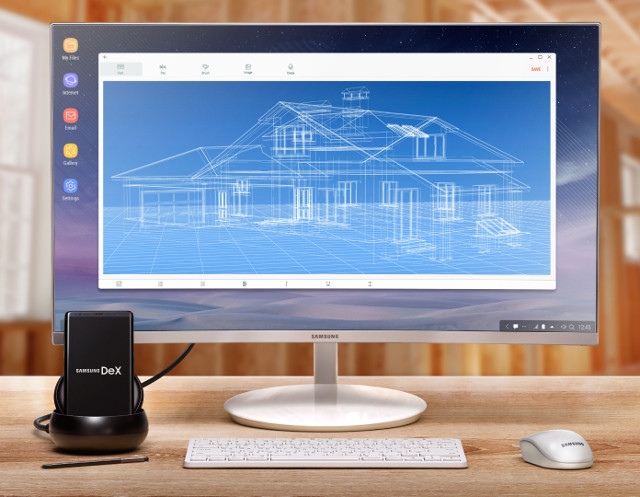Earlier this year, Linux desktop mobile convergence took a serious hit when Canoncial decided to drop support for Unity and Mobile Convergence in their Ubuntu distributions, focusing instead on the enterprise and IoT market, and replacing Unity by GNOME starting with the just released Ubuntu 17.10.
Things started to look better with Purism Librem 5 Linux smartphone, which has now raised $1.8 million dollars, and partnered with well-known members of the Linux ecosystems like KDE, GNOME, and NextCloud. However, the phone will be based on a rather low end NXP i.MX 8M quad Cortex A53 SoC, is scheduled for January 2019 only, and being a crowdfunding campaign, failure is always a possibility.
But today, the outlook for Linux phones brightened even more, as Samsung unveiled plans for “Linux on Galaxy” at the Samsung Developer Conference 2017.

The solution will leverage the company’s DeX (Desktop Experience) that relies on DeX Station – a dock for Samsung Galaxy S8, S8+, and Note8 smartphone – that connected to a big display, as well as a special Android desktop mode that supports multi-window, comes with a start menu, etc…
Linux on Galaxy app will enable developers and users to leverage Samsung DeX hardware (station + smartphone) to run their preferred Linux desktop distribution(s) using the same kernel that powers Android OS. For example, developers will be able to code using their mobile on-the-go, and with Samsung DeX, continue their work on a larger display.
Samsung Linux on Galaxy is still a work in progress, and the project is still private. But if you are interested, you can register your interest in order to get notified when it goes public.

Jean-Luc started CNX Software in 2010 as a part-time endeavor, before quitting his job as a software engineering manager, and starting to write daily news, and reviews full time later in 2011.
Support CNX Software! Donate via cryptocurrencies, become a Patron on Patreon, or purchase goods on Amazon or Aliexpress




